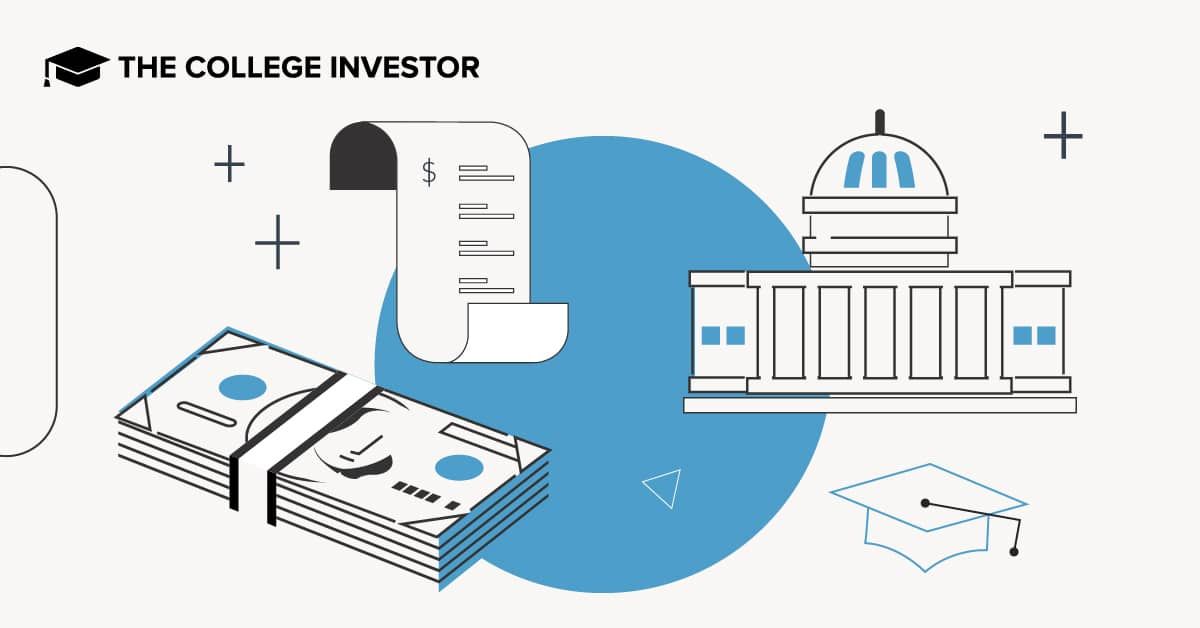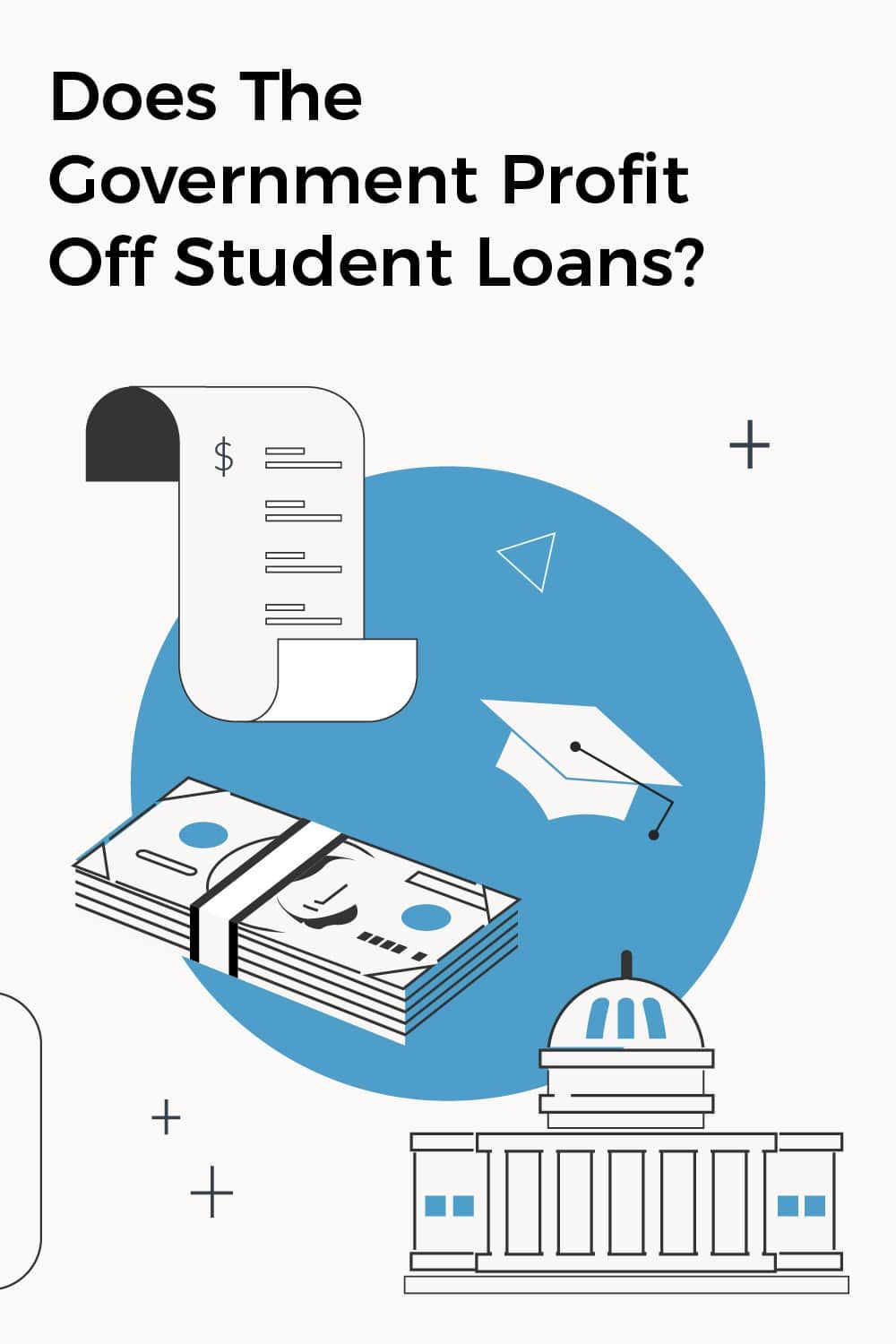
It should be a simple question - does the government profit off of student loans? But depending on who you ask, the federal government either earned a profit or lost money on federal student loans prior to the pandemic. The answer depends on political and accounting perspectives.
During the pandemic, however, the payment pause and interest waiver has caused the federal government to lose money on federal student loans, regardless of the method used to calculate the subsidy rates. By forgoing nearly $5 billion a month in interest, the federal student loan program swung from a profit to a loss even in the most optimistic of projections.
Let’s take a tour of how the federal government’s budget calculates the subsidy rates for various federal programs. But, before we do this, let’s review the concept of net present value accounting.
What Is Net Present Value?
When a loan program generates revenue over time, you can evaluate the total income of the program by calculating the current value of future income. Income includes not just future interest payments, but also future payments of principal.
A simplistic approach is to just sum the future payment amounts.
Total Student Loan Revenue = Sum Of All Future Payments
But, future dollars are worth less than current dollars, in part because of inflation.
A more sophisticated approach calculates the present value of the future payments by discounting it.
For example, if the annual inflation rate is 5%, a dollar one year from now has the same buying power as 95 cents today and a dollar two years from now is worth slightly less than 91 cents today. The cumulative impact is calculated based on a product of each year’s discounted value.
The present value will depend on the choice of discount rate. Common choices include the inflation rate and a risk-free rate of return. The yield on U.S. Treasuries of a comparable maturity is often used as risk-free rate of return since investments in U.S. Treasuries are low risk.
In effect, the present value is the amount you would need to invest now in a risk-free investment to yield the future stream of loan payments.
Present Value Of Student Loan Revenue = Today’s Value Of All Future Payments Discounted Using Inflation And Rate Of Return
But, there are often philosophical differences in the choice of a risk-free rate of return.
The Federal Credit Reform Act of 1990 specifies the methodology that must be used in the federal budget.
Some people, however, argue that the discount rate is too low. They advocate for the use of Fair Value Accounting (FVA), which uses a higher discount rate because it considers market risk. But, government programs are not subject to the same risks as commercial programs. Curiously, proponents of Fair Value Accounting are often selective in the choice of programs for which they feel FVA should be used, so the debate seems more political than policy-driven.
A higher discount rate reduces the value of the future income by more than a lower discount rate. After you subtract the costs from the present value of the future income, you can swing it from a profit to a loss or vice versa, depending on the choice of discount rate.
What Does The Federal Budget Say?
The education appendix to the federal budget includes an analysis of the student loan program costs, referred to as subsidies. It includes actual figures for the previous year and estimates for the current year and the next year.
The subsidy costs are broken down by type of loan, including new subsidized Federal Direct Stafford Loans, unsubsidized Federal Direct Stafford Loans for undergraduate and graduate students, new Federal Direct Parent PLUS Loans and Federal Direct Grad PLUS Loans, as well as Federal Direct Consolidation Loans. There is also an overall loan subsidy figure, plus an overhead figure for federal administrative costs.
This table shows the actual subsidy costs from the federal budget for the last several federal fiscal years. Positive numbers indicate a net cost while negative numbers indicate a net profit. So, if you're wondering where the government is potentially profiting from student loans, look for loan programs that have a NEGATIVE number (such as Parent PLUS Loans).
The program costs are expressed as percentages. For example, a cost of 2% means it costs the federal government $2 over the life of the loan on a net present value basis for every $100 borrowed.
The Federal Direct Loan program swung from a profit during the Obama administration to a loss during the Trump administration. The loss increased significantly in FY2020 due to the payment pause and interest waiver during the pandemic.
Subsidized Stafford loans always have a net cost because of the cost of the subsidized interest benefit. Parent PLUS loans are usually profitable due to higher interest rates and lower default rates, compensating for losses in the other loan programs.
Student Loan Program | FY 2020 | FY 2019 | FY 2018 | FY 2017 |
|---|---|---|---|---|
Subsidized Stafford (U) | 24.57% | 10.84% | 9.65% | 9.20% |
Unsubsidized Stafford (U) | 20.78% | -3.22% | -1.43% | -0.88% |
Unsubsidized Stafford (G) | 20.69% | -1.06% | -4.12% | -2.62% |
Parent PLUS | -9.27% | -34.87% | -30.90% | -31.04% |
Grad PLUS | 22.54% | 2.19% | -1.35% | -1.22% |
Consolidation Loan | 13.46% | 18.15% | 12.29% | 3.58% |
Total Loan Subsidy (Costs) | 17.30% | 3.40% | 0.98% | -0.75% |
Federal Administrative Costs | 1.45% | 1.45% | 1.45% | 1.45% |
Total, Direct Loans | 18.75% | 4.49% | 2.43% | 0.70% |
To summarize the table a bit, this means that in Fiscal Year 2020, the Federal Student Loan programs cost the government $18.75 for every $100 borrowed. In more "normal" years like 2017, the Federal student loan program cost the government $0.70 for every $100 borrowed.
The subsidy costs are based, in part, on interest and fees, the length of the average loan maturity, default rates, defaults net of recoveries and the recovery rate.
The average loan maturity for FY2022 is 17 years, with a weighted average interest rate of 4.68%, average loan fees of 1.31% (1.057% for Federal Direct Stafford Loans and 4.228% for Federal Direct PLUS Loans), a lifetime default rate of 19.13%, and a recovery rate of 104.74%.
The net recovery rate for defaulted loans is about 80 to 85 cents on the dollar after subtracting collection costs. The recovery rate is much higher than for commercial loans in part because the federal government has very strong powers to compel repayment, including administrative wage garnishment, offset of income tax refunds and offset of Social Security benefit payments.
The program costs must be periodically re-estimated, in part because of changes in interest rates and other assumptions. The re-estimates are usually higher than the original subsidy rates. So, even if the loan program initially looks like it yields a profit, it may ultimately yield a net cost after the program costs are re-estimated.
The focus of federal student loan programs is on enabling students to pay for a college education and not to provide profit to the federal government.
Where Does All The Money Go?
Borrowers often wonder how the U.S. Department of Education spends the interest that borrowers pay on federal student loans in the Direct Loan program. Most of the money goes to cover the costs of making, servicing and collecting the student loans, as well as defaults, discharges and loan forgiveness.
- Federal student loans are funded by issuing U.S. Treasuries, which is money borrowed from investors. The federal government must pay interest on the U.S. Treasuries. So, part of the interest that borrowers pay covers the cost of the funds that are used to make the loans. There’s also a fee paid by the U.S. Department of Education to the U.S. Department of the Treasury to cover the cost of issuing and administering the U.S. Treasuries.
- Loan servicers are paid a fee to service federal student loans. Servicing loans includes originating the loans, keeping track of the loans, communicating with borrowers, mailing out loan statements, customer service (e.g., call centers), processing payments, following up with delinquent borrowers and complying with federal laws and regulations. The loan servicers are paid on a unit cost basis, where they are paid a fixed amount per borrower, depending on the repayment status of the borrower’s loans. The servicing fees range from $0.45 to $2.85 per borrower per month.
- Subsidized interest benefits, where the federal government pays the interest on subsidized Federal Direct Stafford Loans during the in-school and grace periods, as well as periods of authorized deferment, reduce the interest revenue that the federal government would otherwise receive. In addition, interest was waived on federal student loans held by the U.S. Department of Education during the Covid-19 pandemic.
- Federal student loans have much higher default rates than private student loans, in part because federal student loans are not cosigned and are made to borrowers without regard to credit scores or debt-to-income rations. Even with a high recovery rate, there is still a cost associated with collecting a defaulted loan, and the net revenue is lower than for borrowers whose loans are current. The average amount collected, after subtracting collection costs, is less than the amount owed.
- Student loan forgiveness and discharge programs reduce the interest and principal paid on the cancelled student loan debt.
- There is also administrative overhead for U.S. Department of Education staff who provide oversight over the loan servicers and collection agencies.
If there were a profit on federal student loans, the net revenue would be used to defray the cost of other federal student aid programs, such as the Federal Pell Grant and Federal Work-Study programs. When federal legislation involves a reduction in the cost of federal student loan programs, Congress often uses the savings to justify increased spending in other parts of the U.S. Department of Education budget.

Mark Kantrowitz is an expert on student financial aid, scholarships, 529 plans, and student loans. He has been quoted in more than 10,000 newspaper and magazine articles about college admissions and financial aid. Mark has written for the New York Times, Wall Street Journal, Washington Post, Reuters, USA Today, MarketWatch, Money Magazine, Forbes, Newsweek, and Time. You can find his work on Student Aid Policy here.
Mark is the author of five bestselling books about scholarships and financial aid and holds seven patents. Mark serves on the editorial board of the Journal of Student Financial Aid, the editorial advisory board of Bottom Line/Personal, and is a member of the board of trustees of the Center for Excellence in Education. He previously served as a member of the board of directors of the National Scholarship Providers Association. Mark has two Bachelor’s degrees in mathematics and philosophy from the Massachusetts Institute of Technology (MIT) and a Master’s degree in computer science from Carnegie Mellon University (CMU).
Editor: Robert Farrington Reviewed by: Chris Muller
